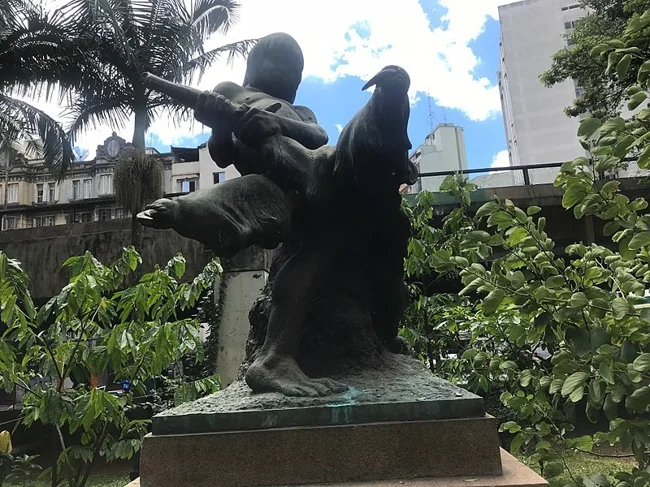The statue "Indian and anteater" and its symbolism (6 photos)
This touching figure of a boy fighting an anteater symbolizes the local culture and the biodiversity of São Paulo. 
In a completely unassuming corner of São Paulo, there is an interesting bronze sculpture. It depicts a child fighting a huge anteater. The work symbolizes a vanished world to which there will be no return. 
The monument depicts a scene that is significantly different from the usual and ubiquitous Greco-Roman sculptures. A boy laughs, grappling with a creature that terrifyingly waves its sharp claws. The plot is notable in that, although the anteater often looks frankly funny and amusing outside of Latin America, this animal can be deadly when it saves its life. Its blows with sharp claws often lead to the death of hunters who cornered it. 
Giant Anteater
This sculpture was designed by the Italian-Brazilian sculptor Ricardo Cippichia in the 1940s as part of a government art project to beautify the Santa Cecilia neighborhood. Cippichia, like a number of other local artists of the early and mid-20th century, was heavily influenced by the Degringolismo movement. 
Degringolismo sought to achieve maximum cultural and aesthetic authenticity by rejecting the prevailing models of artistic expression and schools of thought imported from the United States and, to some extent, Europe. Instead, the movement sought themes that were directly relevant to the Brazilian experience, through the exploration of mythology, folklore, landscapes, and nature native to Brazil. 
Tupiniquim Chief, 2007
The sculpture is called "O Indio e o Tamanduá," or "The Indian and the Anteater." However, its symbolic meaning is more than obvious. The Indian child is believed to represent the pre-colonial inhabitants of the Anhangabau region (now known as São Paulo), the Tupi Indians. The powerful anteater is a reference to the Tamanduatei River, which flows through the area. This animal was once a common representative of the local fauna and a local landmark. The name "Tamanduatei" itself translates as "river of ants" in the Tupi language. 
These days, both the indigenous Tupi tribes and the giant anteater have all but disappeared from the state of São Paulo. Their homeland, the Atlantic forest jungle, has been destroyed. And in its place has come an endless concrete jungle. But this mesmerizing bronze sculpture remains a timely and topical reminder of a world gone forever, to which there will never be a return.




























